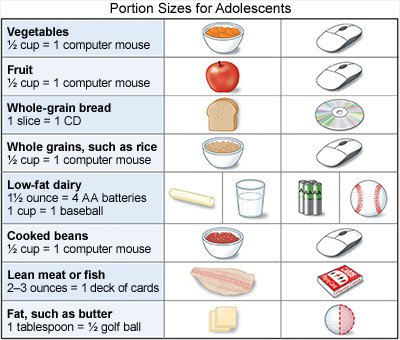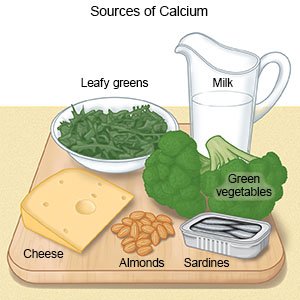Healthy Living for Adolescents
Medically reviewed by Drugs.com. Last updated on Aug 4, 2025.
AMBULATORY CARE:
What you need to know about your child's development during adolescence:
Your child will have a growth spurt during adolescence. This growth spurt and other changes during adolescence may cause him or her to change eating habits. His or her appetite will increase so he or she will eat more than usual. As your child becomes more independent, he or she will make more of his or her own food choices. Your child should follow a healthy meal plan that provides enough calories and nutrients for growth and good health. He or she should also get regular physical activity.
Guidelines for helping your child make healthy food choices:
 |
- Teach your child about a healthy meal plan by setting a good example. Your child still learns from your eating habits. Buy healthy foods for your family. Eat healthy meals together as a family as often as possible. Talk with your child about why it is important to choose healthy foods.

- Encourage your child to eat regular meals and snacks, even if he or she is busy. Your child should eat 3 meals and 2 snacks each day to help meet his or her calorie needs. He or she should also eat a variety of healthy foods to get the nutrients he or she needs, and to maintain a healthy weight. You may need to help your child plan meals and snacks. Suggest healthy food choices that your child can make when eating out. He or she could order a chicken sandwich instead of a large burger or choose a side salad instead of French fries. Praise your child's good food choices whenever you can.
- Encourage your child to get enough calcium each day. Calcium is needed to build strong bones. Children who are 9 to 18 years old need 1300 milligrams (mg) of calcium each day. To get enough calcium, your child should eat foods high in calcium. Good sources of calcium are low-fat dairy foods (milk, cheese, and yogurt). Other foods that contain calcium include tofu, kale, spinach, broccoli, almonds, and calcium-fortified orange juice.

- Encourage your child to talk to you or a healthcare provider about safe weight loss, if needed. Adolescents may want to follow a fad diet if they see their friends or famous people following such a diet. Fad diets usually do not have all the nutrients your child needs to grow and stay healthy. Diets may also lead to eating disorders such as anorexia and bulimia. Anorexia is refusal to eat. Bulimia is binge eating followed by vomiting, using laxative medicine, not eating at all, or heavy exercise.
Healthy foods you can provide to your child:
 |
- Provide a variety of fruits and vegetables. Half of your child's plate should contain fruits and vegetables. Offer more dark green, red, and orange vegetables. Dark green vegetables include broccoli, spinach, romaine lettuce, and collard greens. Examples of orange and red vegetables are carrots, sweet potatoes, winter squash, and red peppers.
- Encourage your adolescent to limit fruit juice to 8 ounces a day. Buy fresh, canned, or dried fruit instead of fruit juice as often as possible. Help your adolescent know the difference between fruit drinks and fruit juice. Explain that fruit drinks are mostly sugar and have little to no benefits. Also, teach him or her that too much fruit juice can cause weight gain and cavities.
- Provide whole-grain foods. Half of the grains your child eats each day should be whole grains. Whole grains include brown rice, whole wheat pasta, and whole-grain cereals and breads.
- Provide low-fat dairy foods. Dairy foods are a good source of calcium. Dairy foods include milk, cheese, cottage cheese, and yogurt.
- Provide lean meats, poultry, fish, and other healthy protein foods. Other healthy protein foods include legumes (such as beans), soy foods (such as tofu), and peanut butter. Bake, broil, and grill meat instead of frying it to reduce the amount of fat.
- Use healthy fats to prepare foods. Unsaturated fat is a healthy fat. It is found in foods such as soybean, canola, olive, and sunflower oils. It is also found in soft tub margarine that is made with liquid vegetable oil. Limit unhealthy fats such as saturated fat, trans fat, and cholesterol. These are found in shortening, butter, stick margarine, and animal fat.
Foods your child should limit:
- Foods high in fat and sugar do not have the nutrients your child needs to be healthy. Foods high in fat and sugar include snack foods (potato chips, candy, and other sweets), juice, fruit drinks, and soda. If your child eats these foods too often, he or she may eat fewer healthy foods during mealtimes. He or she may also gain too much weight. Your child may not get enough iron and develop anemia (low levels of iron in the blood). Anemia can affect your child's growth and ability to learn. Iron is found in red meat, egg yolks, and fortified cereals, and breads.
- Caffeine is found in soft drinks, energy drinks, tea, coffee, and some over-the-counter medicines. Your child should limit his or her intake of caffeine to 100 mg or less each day. Caffeine can cause your child to feel jittery, anxious, or dizzy. It can also cause headaches and trouble sleeping.
Help your child get enough physical activity:
- Your child should get at least 1 hour of physical activity each day. Examples of physical activities include sports, running, walking, swimming, and riding bikes. The hour of physical activity does not need to be done all at once. It can be done in shorter blocks of time.

- Limit your child's screen time. Screen time is the amount of television, computer, smart phone, and video game time your child has each day. It is important to limit screen time. This helps your child get enough sleep, physical activity, and social interaction each day. Your child's pediatrician can help you create a screen time plan. The daily limit is usually 1 hour for children 2 to 5 years. The daily limit is usually 2 hours for children 6 years or older. You can also set limits on the kinds of devices your child can use, and where he or she can use them. Keep the plan where your child and anyone who takes care of him or her can see it. Create a plan for each child in your family. You can also go to https://www.healthychildren.org/English/media/Pages/default.aspx#planview for more help creating a plan.
Follow up with your child's doctor as directed:
Write down your questions so you remember to ask them during your visits.
© Copyright Merative 2025 Information is for End User's use only and may not be sold, redistributed or otherwise used for commercial purposes.
The above information is an educational aid only. It is not intended as medical advice for individual conditions or treatments. Talk to your doctor, nurse or pharmacist before following any medical regimen to see if it is safe and effective for you.
Further information
Always consult your healthcare provider to ensure the information displayed on this page applies to your personal circumstances.
